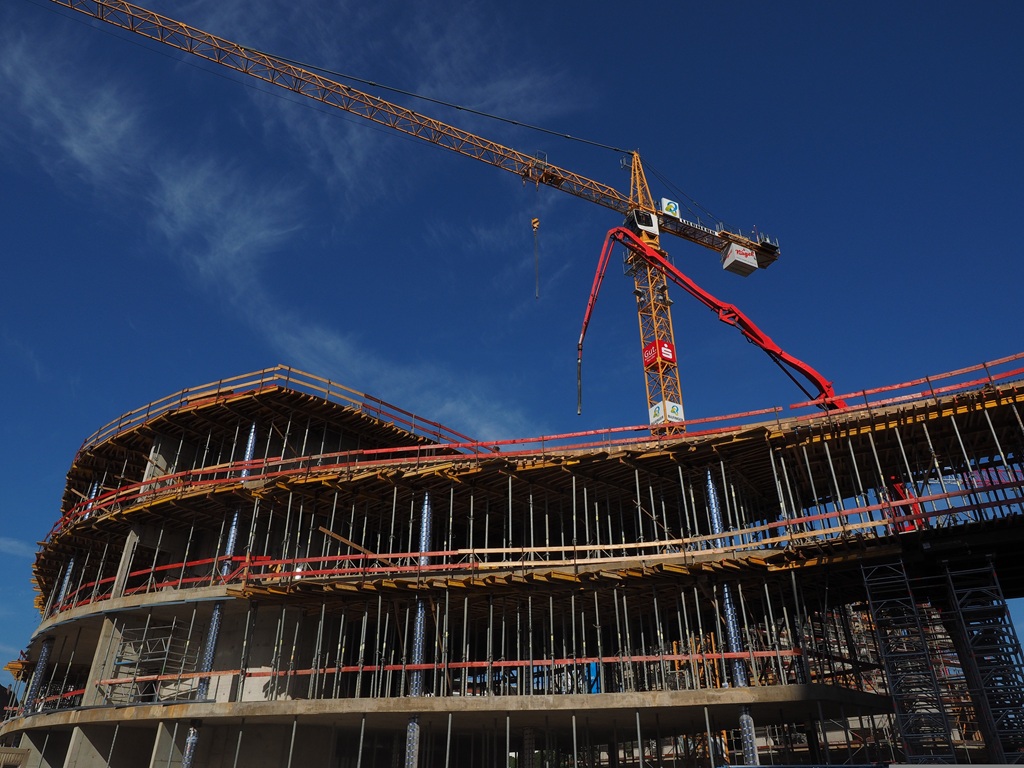Mega construction projects, with their massive scale and resource demands, have a significant environmental footprint. But a growing awareness of our planet’s limits is driving a shift towards sustainable practices in these ambitious endeavors. Let’s explore how mega construction is embracing eco-friendly approaches:
1. Green Building Materials: Choosing Wisely
Traditional construction materials often come with a hefty environmental cost. Sustainable alternatives are stepping into the spotlight:
Recycled and reclaimed materials: Using recycled steel, reclaimed wood, and recycled aggregates reduces reliance on virgin resources and minimizes waste.
Low-impact concrete: Utilizing concrete mixtures with lower cement content, incorporating supplementary cementitious materials like fly ash or slag, and employing carbon capture technologies can significantly reduce the carbon footprint of concrete production.
Sustainable timber: Sourcing wood from sustainably managed forests certified by organizations like the Forest Stewardship Council (FSC) ensures responsible forestry practices.
2. Energy Efficiency: Designing for the Long Run
Buildings are major energy consumers. Mega construction projects can integrate energy-efficient features to minimize their operational impact:
High-performance building envelopes: Utilizing insulation, high-performance windows, and airtight construction to reduce energy loss.
Renewable energy sources: Integrating solar panels, wind turbines, or geothermal systems to generate clean energy on-site.
Smart building technologies: Employing building management systems to optimize lighting, heating, and cooling based on occupancy and real-time conditions.
3. Water Conservation: Every Drop Counts
Water is a precious resource, and mega construction projects can implement strategies to conserve it:
Rainwater harvesting: Collecting and storing rainwater for use in irrigation, toilet flushing, and other non-potable applications.
Greywater recycling: Treating and reusing wastewater from showers, sinks, and laundry for irrigation or toilet flushing.
Water-efficient fixtures: Installing low-flow toilets, faucets, and showerheads to reduce water consumption.
4. Waste Management: Minimizing and Reusing
Construction generates a significant amount of waste. Sustainable practices focus on minimizing, reusing, and recycling:
Waste reduction strategies: Implementing lean construction principles to minimize material waste and optimize resource utilization.
Construction and demolition waste recycling: Sorting and recycling materials like concrete, steel, and wood to divert waste from landfills.
On-site composting: Composting organic waste like yard debris and food scraps to create nutrient-rich soil amendments.
5. Sustainable Site Management: Protecting the Environment
Mega construction projects can minimize their impact on the surrounding environment through:
Erosion and sediment control: Implementing measures to prevent soil erosion and protect water quality.
Protecting existing vegetation: Preserving trees and other vegetation whenever possible.
Minimizing light and noise pollution: Implementing measures to reduce light spill and noise levels.
Building a Greener Future
Sustainable practices in mega construction are not just about minimizing environmental impact; they also contribute to cost savings, enhance building performance, and improve occupant health and well-being. By embracing these approaches, we can build a more sustainable future for generations to come.

